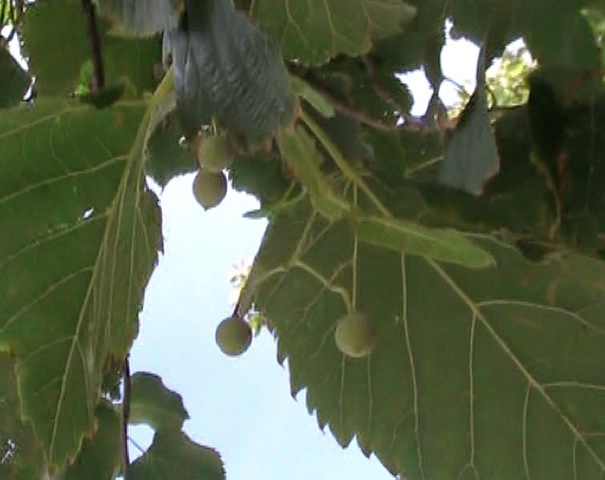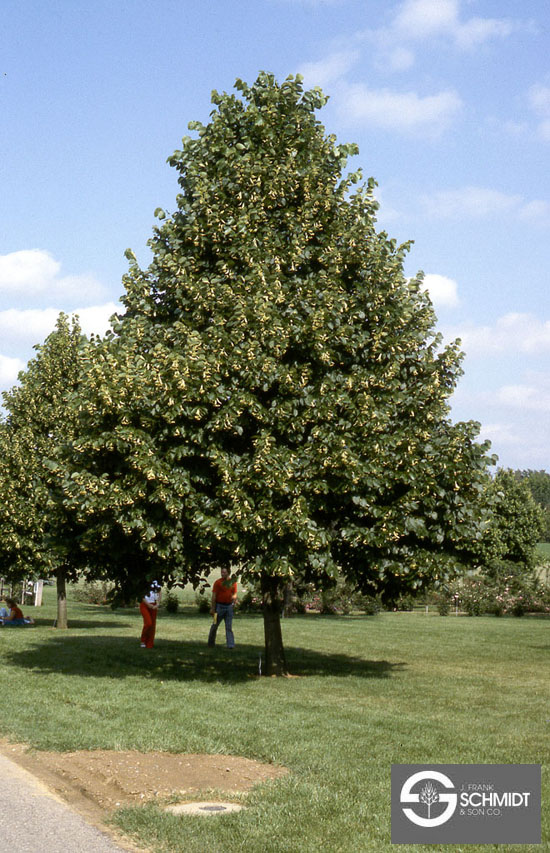| PSC 2620: Woody Trees and Shrub | Course Home | Week 6 |
Tilia americana - American Linden or Basswood
Plant Viewer
 |
 |
| American Linden has a broadly ovate leaf with an obliquely cordate base. The leaf is a deep green and has a roughly serrated margin. Image: Wikimedia | The bark is ridged, but each the ridges look as if the tips have been sanded down flat. |
 |
|
| Quarter inch diameter hard fruit forms during the summer and ripens in fall. |
Plant Description
Tilia americana, or American Linden, is a long-lived and large shade tree (60-80 feet tall and half as wide). When the tree is young it has a pyramidal shape, but will eventually mature to a more ovate shape. It is faster growing and has a more open branching habit than other species of Tilia. It can tolerate some drought conditions, but it will perform better in more moist soils. The bark is gray-brown in color with flat-topped ridges that make it look as if someone has sanded down the outermost layer corky bark.
The large (4-8 inches long), dark green leaf is broat-ovate form with an obliquely cordate base. The margin is coarsely serrated. The leaf of Tilia americana is larger in size and more coarsely serrated than those of Tilia cordata. The leaves are arranged alternately on the stem on petioles 1-3 inches long.
Small, but strongly fragrant, flowers emerge in late spring. The flowers are a pale yellow or white in color. They hang in drooping cymes with up to 10 or more blossoms per cluster. The flowers are very attractive to bees and other pollinating insects, and it is best to keep the limbs of the trees pruned up in order to avoid walking through a swarm of insects. In late summer, 1/4 inch fruit appears in clusters on the tree. The fruit is a hard nut that cannot be crushed between the features (another useful method of differentiating between Tilia americana and Tilia cordata.
Landscape Use
Use as a shade tree in residential lots or larger campuses. I do not recommend planting it in particularly difficult locations. I have seen it used as a street tree, but I believe that Tilia cordata is a better selection for that role.
Points of interest
It may develop stress in areas with high air pollution. Lindens are often the feeding ground of aphids, who's voracious feeding on the leaves causes leads to a shower of sticky sap, called honeydew, on anything below the tree.
Notable Cultivars
Redmond The most popular form, it has a distinctly dense, pyramidal shape. It grows smaller than the regular species, reaching 40-50 feet tall. It is one of the best cultivars of American Linden for use as a street tree.
